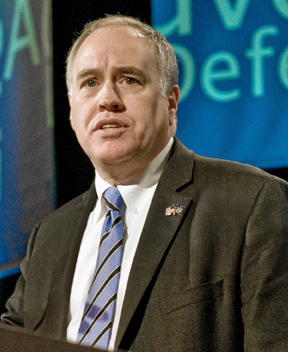 Over a dozen of North Carolina’s highest-paid pensioners are drawing benefit checks that exceed limits set under federal law.
Over a dozen of North Carolina’s highest-paid pensioners are drawing benefit checks that exceed limits set under federal law.
But there are no laws being broken here, because they are drawing part of their checks from a special fund set up by state lawmakers in 2013.
The News Observer explains:
Some of the state’s highest-paid government retirees are benefiting from a supplemental fund set up by state lawmakers in 2013 so the retirees can receive pensions that otherwise would be too high under federal law.
The pensions of 17 public retirees in North Carolina exceed the federal limits in 2014, in many cases by tens of thousands of dollars. The state’s top-paid retiree, former UNC Athletic Director Dick Baddour, received just over $64,000 of his $281,000 annual pension from the fund.
Other beneficiaries include former Wake County Manager David Cooke, who retired in 2013, and former Durham Schools Superintendent Carl Harris, who left in 2009 to join President Barack Obama’s administration.
In all cases, the retirees and their former employers met their obligations under state law by paying required contributions into the system during the retirees’ working years.
The supplemental fund, known as a qualified excess benefits arrangement, or QEBA, was created by state lawmakers last year to get around a potential problem the state could have fixed nearly 30 years ago, when Congress lowered the pension limits. But back then, no state or local employees in North Carolina were making the kind of money that would bring the limits into play.
“They probably looked and said, ‘It’s never going to apply to anyone,’ ” said Sam Watts, a policy development analyst for the State Retirement Systems Division, which is under State Treasurer Janet Cowell.
Retirement system officials realized about three years ago that some retirees were exceeding the federal limits, which are based on factors such as years of service and retirement age. The limits are typically adjusted upward annually. An employee who retired in 2014 at age 65, for example, was limited to a pension of no more than $210,000. Those who retire at a younger age have a lower pension limit.
Congress gave public pension systems the opportunity to make arrangements for excess retirement benefits in 1996, as those systems began finding some of their retiring employees bumping up against the pension limits. In 2013, officials with the state retirement system asked the legislature to set up a similar supplemental fund.
If lawmakers didn’t set up the supplemental fund, the state pension system could have lost its tax-exempt status, according to the News Observer.
